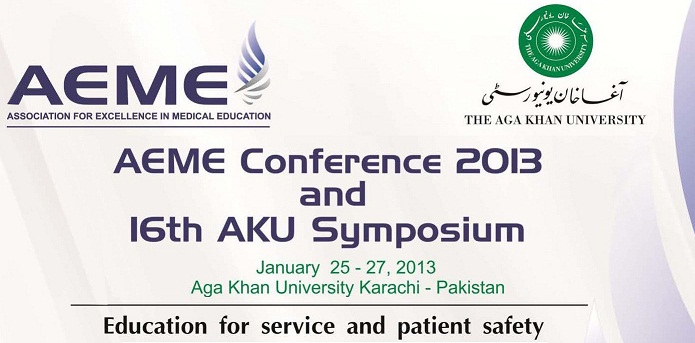Day 1 : Oral Presentations (Theme: Patient Safety)
Attitude of medical students towards basic patient safety rules- an initial screening towards the global culture of patient safety in Pakistan
Location
Lecture Hall 2
Start Date
26-1-2013 11:10 AM
Abstract
Background: Globalization has affected all dimensions of human society, particularly education and healthcare of the people has seen greater transition. The field of medical education currently demands for professional education which can produce global professional health care specialists who can provide quality services to maintain globally accepted standards. According to the National Patient Safety Agency, patient safety is the vigorous process by which organization try to provide safe care to the patients by avoiding accidental injuries and preventing adverse outcomes as the result of health care (Kohn et al. 1999; WHO, 2005).
Patient safety education is a demanding phenomenon and students and teachers are at the heart of it. Unless we create awareness among graduates towards patient safety, we cannot expect safe healthcare institutions. In current scenario, this research was undertaken to assess the attitude of medical students towards basic patient safety rules and to understand the role of medical education in promoting the culture of patient safety in Pakistan.
Methods: The overall study is based on survey research design. The population consisted of all the Medical students in Karachi. Through purposive sampling, the total number of two medical institutions was selected, while through random sampling n=200 respondents were selected, studying in their final year of MBBS. The data was collected through structured questionnaire and analyzed through tables and graphs.
Results: Majority of the respondents have basic knowledge about patient safety, but their attitude towards management, colleagues and self practice reflect hesitation. Most of the medical students understand the importance of learning about patient safety issues, but are not willing to take responsibility, if make any error, related to patient safety in their practical life. Most of the respondents are willing to compromise safety concerns of their patients. Majority of the respondents believe that competent physician does make error. Most of the students learnt about patient safety during their coursework and also highlighted the role of patient safety training, but the attitude and lack of concern over many areas of patient safety reflect missing gap between their knowledge and attitude towards patient safety
Conclusions: There is a dire need to revise the curricula of MBBS and to teach practical patient safety rules and courses to the students before they enter to the practical life.
Key words: patient safety, attitude, knowledge, medical students
Attitude of medical students towards basic patient safety rules- an initial screening towards the global culture of patient safety in Pakistan
Lecture Hall 2
Background: Globalization has affected all dimensions of human society, particularly education and healthcare of the people has seen greater transition. The field of medical education currently demands for professional education which can produce global professional health care specialists who can provide quality services to maintain globally accepted standards. According to the National Patient Safety Agency, patient safety is the vigorous process by which organization try to provide safe care to the patients by avoiding accidental injuries and preventing adverse outcomes as the result of health care (Kohn et al. 1999; WHO, 2005).
Patient safety education is a demanding phenomenon and students and teachers are at the heart of it. Unless we create awareness among graduates towards patient safety, we cannot expect safe healthcare institutions. In current scenario, this research was undertaken to assess the attitude of medical students towards basic patient safety rules and to understand the role of medical education in promoting the culture of patient safety in Pakistan.
Methods: The overall study is based on survey research design. The population consisted of all the Medical students in Karachi. Through purposive sampling, the total number of two medical institutions was selected, while through random sampling n=200 respondents were selected, studying in their final year of MBBS. The data was collected through structured questionnaire and analyzed through tables and graphs.
Results: Majority of the respondents have basic knowledge about patient safety, but their attitude towards management, colleagues and self practice reflect hesitation. Most of the medical students understand the importance of learning about patient safety issues, but are not willing to take responsibility, if make any error, related to patient safety in their practical life. Most of the respondents are willing to compromise safety concerns of their patients. Majority of the respondents believe that competent physician does make error. Most of the students learnt about patient safety during their coursework and also highlighted the role of patient safety training, but the attitude and lack of concern over many areas of patient safety reflect missing gap between their knowledge and attitude towards patient safety
Conclusions: There is a dire need to revise the curricula of MBBS and to teach practical patient safety rules and courses to the students before they enter to the practical life.
Key words: patient safety, attitude, knowledge, medical students

